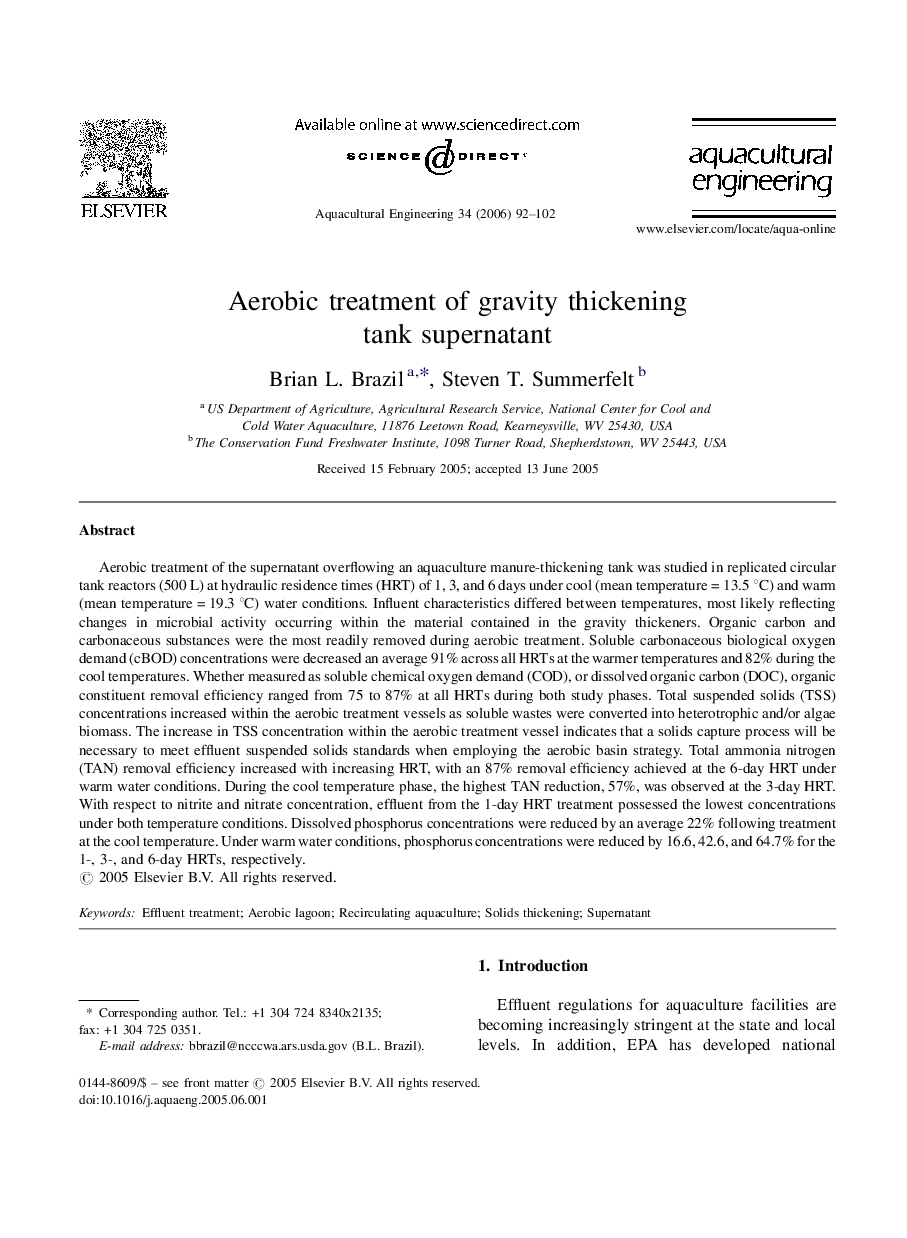| Article ID | Journal | Published Year | Pages | File Type |
|---|---|---|---|---|
| 6381698 | Aquacultural Engineering | 2006 | 11 Pages |
Abstract
Aerobic treatment of the supernatant overflowing an aquaculture manure-thickening tank was studied in replicated circular tank reactors (500 L) at hydraulic residence times (HRT) of 1, 3, and 6 days under cool (mean temperature = 13.5 °C) and warm (mean temperature = 19.3 °C) water conditions. Influent characteristics differed between temperatures, most likely reflecting changes in microbial activity occurring within the material contained in the gravity thickeners. Organic carbon and carbonaceous substances were the most readily removed during aerobic treatment. Soluble carbonaceous biological oxygen demand (cBOD) concentrations were decreased an average 91% across all HRTs at the warmer temperatures and 82% during the cool temperatures. Whether measured as soluble chemical oxygen demand (COD), or dissolved organic carbon (DOC), organic constituent removal efficiency ranged from 75 to 87% at all HRTs during both study phases. Total suspended solids (TSS) concentrations increased within the aerobic treatment vessels as soluble wastes were converted into heterotrophic and/or algae biomass. The increase in TSS concentration within the aerobic treatment vessel indicates that a solids capture process will be necessary to meet effluent suspended solids standards when employing the aerobic basin strategy. Total ammonia nitrogen (TAN) removal efficiency increased with increasing HRT, with an 87% removal efficiency achieved at the 6-day HRT under warm water conditions. During the cool temperature phase, the highest TAN reduction, 57%, was observed at the 3-day HRT. With respect to nitrite and nitrate concentration, effluent from the 1-day HRT treatment possessed the lowest concentrations under both temperature conditions. Dissolved phosphorus concentrations were reduced by an average 22% following treatment at the cool temperature. Under warm water conditions, phosphorus concentrations were reduced by 16.6, 42.6, and 64.7% for the 1-, 3-, and 6-day HRTs, respectively.
Related Topics
Life Sciences
Agricultural and Biological Sciences
Aquatic Science
Authors
Brian L. Brazil, Steven T. Summerfelt,
